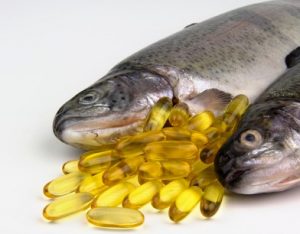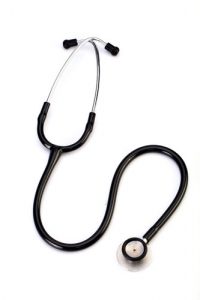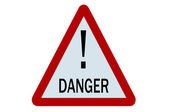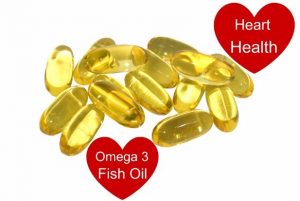What Is The Omega-3 Status Of The American Population?
Author: Dr. Stephen Chaney
 It is no secret that the American population is deficient in omega-3s. Numerous studies have documented that fact. There are many reasons for Americans’ low intake of omega-3s:
It is no secret that the American population is deficient in omega-3s. Numerous studies have documented that fact. There are many reasons for Americans’ low intake of omega-3s:
- The high price of omega-3-rich fish.
- Concerns about sustainability, heavy metal contamination, and/or PCB contamination of omega-3 rich fish.
- Misleading headlines claiming that omega-3 supplements are worthless and may even do you harm.
Of course, the questions you are asking are probably?
- How deficient are we?
- Does it matter?
The latest study (M Thompson et al, Nutrients, 2019, 11: 177, doi: 10.3390/nu11010177) goes a long way towards answering those important questions.
How Was The Study Done?
 This study used data on 45,347 Americans who participated in NHANES surveys between 2003 and 2014. (NHANES or National Health and Nutrition Examination Surveys is a program run by the CDC that is designed to assess the health and nutritional status of adults and children living in the United States).
This study used data on 45,347 Americans who participated in NHANES surveys between 2003 and 2014. (NHANES or National Health and Nutrition Examination Surveys is a program run by the CDC that is designed to assess the health and nutritional status of adults and children living in the United States).
EPA and DHA intake from foods was based on the average of two 24-hour dietary recall interviews. Trained dietary interviewers collected detailed information on all foods and beverages consumed during the past 24 hours.
To assess EPA and DHA intake from supplements study participants were asked what supplements they had taken in the past 30 days, how many days out of 30 they had taken it, and the amount that was taken on those days.
What Is The Omega-3 Status Of The American Population?
 The results of the NHANES surveys were shocking.
The results of the NHANES surveys were shocking.
In terms of total EPA+DHA intake:
- EPA+DHA intake across all age groups was lower than recommended.
- Toddlers (ages 1-5), children (ages 6-11), and adolescents (ages 12-19) had lower EPA+DHA intakes than adults (ages 20-55) and seniors (ages > 55).
- Women had lower EPA+DHA intakes than men.
- Pregnant women and women of childbearing age did not differ in their EPA+DHA.
- Pregnant women consumed less fish than women of childbearing age (perhaps because of concerns about heavy metal contamination).
- Pregnant women consumed more omega-3 supplements.
In terms of EPA+DHA from supplements:
- Less than 1% of the American population reported using omega-3 supplements.
- The one exception was pregnant women. 7.3% of pregnant women reported taking an omega-3 supplement.
- People taking omega-3 supplements had significantly higher EPA+DHA intake than people not taking omega-3 supplements.
- This was also true for pregnant women. Those taking omega-3 supplements had higher EPA+DHA intake.
Of course, like any clinical study, it has strengths and weaknesses.
The biggest weakness of this study is that omega-3 intake is based on the participants recall of what they ate. The strengths of the study are its size (45,347 participants) and the fact that its estimate of omega-3 intake is consistent with several smaller studies.
Are Americans Deficient In Omega-3s?
 Now we are ready to answer the questions I posed at the beginning of this article. Let’s start with the first one: “How deficient are we?”
Now we are ready to answer the questions I posed at the beginning of this article. Let’s start with the first one: “How deficient are we?”
You would think the answer to that question would be easy. It is not. This study provides a precise estimate of American’s omega-3 intake. The problem is there is no consensus as to how much omega-3s we need. There is no RDA for omega-3s.
There are, in fact, three sets of guidelines for how much omega-3s we need, and they disagree.
- The World Health Organization (WHO) recommendations for EPA+DHA intake range from 100-150 mg/day at ages 2-4 years to 200-500 mg/day for adults.
- The US National Institute of Medicine (IOM) recommendations for EPA+DHA intake range from 70 mg/day for ages 1-3 to 110 mg/day for adult females and 160 mg/day for adult males.
- As if that weren’t confusing enough, an international group of experts recently convened for a “Workshop on the Essentiality of and Recommended Dietary Intakes for Omega-6 and Omega-3 Fatty Acids” (Workshop). This group recommended an EPA+DHA intake of 440 mg/day for adults and 520 mg/day for pregnant and lactating women.
Using these recommendations as guidelines, this study reported that:
- EPA+DHA intake for children 1-5 years old was ~25% of the WHO recommendations and ~40% of IOM recommendations.
- EPA+DHA intake for children 6-11 years old was ~27% of WHO recommendations and ~40% of IOM recommendations.
- EPA+DHA intake for adolescents 12-19 years old was ~50% of IOM recommendations (The WHO did not have a separate category for adolescents.
- EPA+DHA intake for adults 20-55 years old was ~30% of WHO recommendations, and ~65% of IOM recommendations.
- EPA+DHA intake for seniors >55 years old was 38% of WHO recommendations and 82% of IOM recommendations.
- EPA+DHA intake for pregnant women was ~20% of Workshop recommendations (The WHO and IOM did not have a separate category for pregnant women).
While the percentage deficiency varied according to the EPA+DHA guidelines used, it is clear from these results that Americans of all age groups are not getting enough omega-3s from their diet.
The authors concluded: “We found omega-3 intakes across all age groups was lower than recommended amounts.”
Are Pregnant Women and Young Children Dangerously Deficient In Omega-3s?
 While the authors concluded that all age groups were deficient in omega-3s, they were particularly concerned about the omega-3 deficiencies in pregnant women and young children.
While the authors concluded that all age groups were deficient in omega-3s, they were particularly concerned about the omega-3 deficiencies in pregnant women and young children.
The authors said: “Taken together, these findings demonstrate that low omega-3 fatty acid intake is consistent among the US population and could increase the risk for adverse health outcomes, particularly in vulnerable populations (e.g., young children and pregnant women).”
In part, the focus on young children and pregnant women was based on their very low omega-3 intake. With intakes at 20-27% of recommended levels, I would consider these groups to be dangerously deficient in omega-3s.
 However, the focus on young children and pregnant women was also based on the seriousness of the adverse health outcomes associated with low omega-3 intake in these population groups. This answers the second question I posed at the beginning of this article: “Does it matter?”
However, the focus on young children and pregnant women was also based on the seriousness of the adverse health outcomes associated with low omega-3 intake in these population groups. This answers the second question I posed at the beginning of this article: “Does it matter?”
According to the authors low intake of EPA and DHA during pregnancy and early childhood is associated with maternal depression, pre-term births, low birth-weight babies, increased risk of allergies and asthma, problems with learning and cognition, and other neurocognitive outcomes.
None of these associations between low omega-3 intake and adverse health outcomes have been proven beyond a shadow of a doubt, but the evidence is strong enough that we should be alarmed by the very low omega-3 intake in pregnant women and young children.
There is, however, a simple solution. The authors of this study concluded: “Individuals taking EPA/DHA containing supplements had significantly elevated intake compared to individuals not taking omega-3 fatty acid-containing supplements or not reporting any supplement use.”
 They went on to say: “As supplement use is associated with increased omega-3 intake, supplementation could be an important source of EPA/DHA, particularly for pregnant women given their lower fish consumption compared to non-pregnant women of childbearing age.”
They went on to say: “As supplement use is associated with increased omega-3 intake, supplementation could be an important source of EPA/DHA, particularly for pregnant women given their lower fish consumption compared to non-pregnant women of childbearing age.”
I agree. Given the low omega-3 intake in these population group and current guidelines for omega-3 intake. I recommend:
- Pregnant & lactating women (and women of childbearing age who might become pregnant) take an omega-3 supplement providing around 520 mg of EPA+DHA/day.
- Young children (ages 1-5) take an omega-3 supplement providing around 100 mg of DHA/day.
Of course, this study also confirmed that Americans of all age groups are not getting enough omega-3s from their diet, and low omega-3 intake may increase the risk of heart disease. Furthermore, recent studies have shown that high purity omega-3 supplements may reduce heart disease risk.
You will find my recommendations for omega-3 supplementation for adults in a previous issue of “Health Tips From the Professor.”
The Bottom Line
The largest study to date (45,347 participants) measured omega-3 intake for Americans of all ages and compared that to current recommendations for omega-3 intake.
The authors of the study concluded:
- “We found omega-3 intakes across all age groups was lower than recommended amounts.”
- “Low omega-3 fatty acid intake … could increase the risk for adverse health outcomes, particularly in vulnerable populations (e.g., young children and pregnant women.”
In part, the focus on young children and pregnant women was based on their very low omega-3 intake. With intakes at 20-27% of recommended levels, I would consider these groups to be dangerously deficient in omega-3s.
However, the focus on young children and pregnant women was also based on the seriousness of the adverse health outcomes associated with low omega-3 intake in these population groups.
- According to the authors low intake of EPA and DHA during pregnancy and early childhood is associated with maternal depression, pre-term births, low birth-weight babies, increased risk of allergies and asthma, problems with learning and cognition, and other neurocognitive outcomes.
There is, however, a simple solution. The authors of this study also concluded:
- “Individuals taking EPA/DHA containing supplements had significantly elevated intake compared to individuals not taking omega-3 fatty acid-containing supplements or not reporting any supplement use.”
- “As supplement use is associated with increased omega-3 intake, supplementation could be an important source of EPA/DHA, particularly for pregnant women given their lower fish consumption compared to non-pregnant women of childbearing age.”
For more details on the study and my recommendations for omega-3 supplementation, read the article above.
These statements have not been evaluated by the Food and Drug Administration. This information is not intended to diagnose, treat, cure or prevent any disease.
